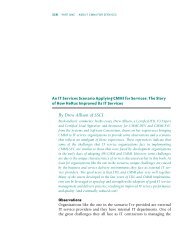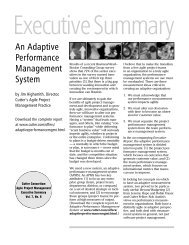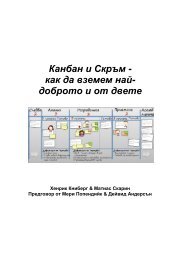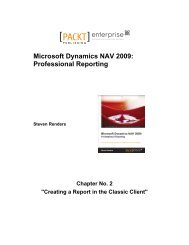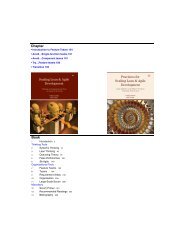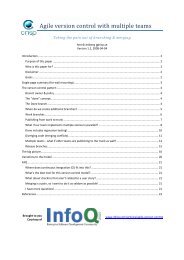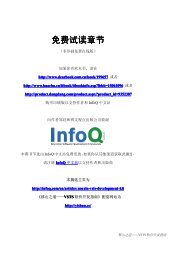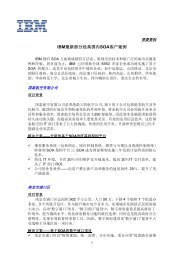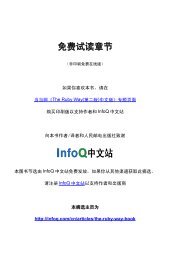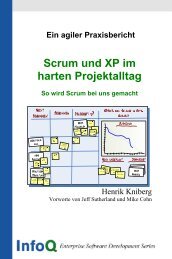Using Osworkflow in your Application
Using Osworkflow in your Application
Using Osworkflow in your Application
Create successful ePaper yourself
Turn your PDF publications into a flip-book with our unique Google optimized e-Paper software.
<strong>Us<strong>in</strong>g</strong> OSWorkfl ow <strong>in</strong> <strong>your</strong> <strong>Application</strong><br />
You can change the abstract state of the <strong>in</strong>stance by call<strong>in</strong>g the changeEntryState()<br />
method of the Workflow <strong>in</strong>terface. Be sure to check the abstract state constants<br />
present <strong>in</strong> the Workflow <strong>in</strong>terface.<br />
Query<strong>in</strong>g the Workflow Store<br />
Human-oriented BPMS have GUIs that let the user realize tasks and search<br />
for work items. OSWorkfl ow permits search<strong>in</strong>g the workfl ow store via a<br />
WorkflowExpressionQuery. This class is a GOF composite design pattern, so you<br />
can nest expressions <strong>in</strong>to expressions for complex queries.<br />
This search is a very generic one <strong>in</strong>clud<strong>in</strong>g only the fi elds <strong>in</strong> OSWorkfl ow.<br />
For more powerful searches, you should create a doma<strong>in</strong> concept that can<br />
be attached to the workfl ow ID. For example, the holiday workfl ow uses<br />
the doma<strong>in</strong> concept of an Employee Request.<br />
You should have an Employee Request table with all the important<br />
doma<strong>in</strong> data, such as department, dates, etc. This is the table to be<br />
searched when doma<strong>in</strong> data is needed. If you can survive with only the<br />
workfl ow default data, the follow<strong>in</strong>g search is very useful.<br />
The follow<strong>in</strong>g code example searches the store for Workflows hav<strong>in</strong>g current steps<br />
with the OWNER equal to johndoe. Don't worry about the owner; we'll see this concept<br />
<strong>in</strong> the security section of this chapter.<br />
WorkflowExpressionQuery q = new WorkflowExpressionQuery<br />
(new FieldExpression(FieldExpression.OWNER,<br />
FieldExpression.CURRENT_STEPS,<br />
FieldExpression.EQUALS, "johndoe"));<br />
List wfs = wf.query(q);<br />
The follow<strong>in</strong>g fi elds are available for search<strong>in</strong>g:<br />
Field Description<br />
ACTION The action that triggered the transition to the step.<br />
CALLER The caller of the action.<br />
DUE_DATE The due date of the step.<br />
FINISH_DATE The fi nish date of the step. It is Null if the step is not yet fi nished.<br />
OWNER The owner of the step.<br />
START_DATE The start date of the step.<br />
STATE The state of the workfl ow.<br />
STATUS The status of the step.<br />
STEP The step.<br />
NAME The name of the bus<strong>in</strong>ess process.<br />
[ 74 ]




